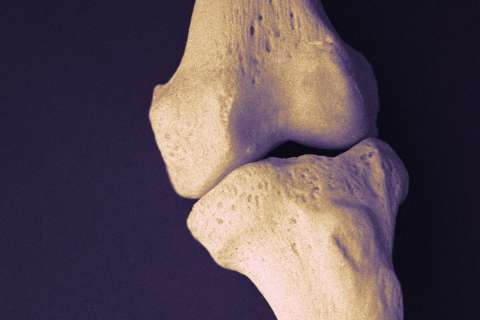Dear Doctors: I was having trouble with muscle spasms in my legs that made it hard to walk and have now been diagnosed with hereditary spastic paraplegia. The doctors in my area don’t seem to know anything about it. What can you tell me about this disease? Where do I go for help?
We’re very sorry to hear about this difficult diagnosis. One of the reasons you’re struggling to find medical help is that hereditary spastic paraplegia is a rare condition that affects between 10,000 and 20,000 individuals in the U.S. That puts it into the category of “orphan diseases,” which are conditions that affect 200,000 or fewer individuals nationwide.
Hereditary spastic paraplegia, or HSP, is an umbrella term for a group of neurological disorders that affect an individual’s leg and hip muscles. Individual forms result from a mutation to a specific gene. Some forms of HSP are inherited, and some are believed to arise from a new mutation in the affected individual.
The word “spastic” refers to the muscle stiffness and spasms that are a hallmark of this disease. “Paraplegia,” which comes from the Greek, is a fancy way of saying that a person’s legs don’t function properly. Taken together, this means that HSP is a genetic neurological disorder that affects an individual’s ability to walk. It is also progressive, which means that it grows more pronounced over time.
Most broadly, HSP is divided into two classifications. Pure or uncomplicated HSP affects only the lower body. In complex or complicated HSP, an array of additional symptoms, such as ear or eye disorders, skin conditions, seizures, and intellectual disabilities may also be present. At this time, more than 30 different types of HSP have been identified.
The main symptom of all types of HSP is slow and progressive weakness in the legs due to muscle stiffness, spasms and sometimes cramps. This can be also accompanied by fatigue, insomnia and pain. In most cases, the disease progresses at a steady rate. HSP appears in individuals of all ages, and – this makes accurate diagnosis a challenge – can present differently even within members of the same family.
At this time there is no cure for HSP. Instead, medical care consists of therapies targeted to each individual’s specific symptoms. That includes physical therapy to maintain muscle tone, range of motion and flexibility, medications to address spasticity, and sometimes orthotic devices to deal with foot and ankle problems. Occupational therapy and antidepressants are often useful for maintaining quality of life. Genetic testing is available, and genetic counseling is important.
As you noted, finding treatment is a challenge. If you live near an urban environment, chances are good that a neurologist in your area is familiar with HSP. If you’re in a more rural area, you will have to expand your search to the larger medical centers.
The Spastic Paraplegia Foundation is a very good resource. Visit their web site and you’ll find information about the disease, a medical provider directory and, perhaps just as important, a community to help inform and support you.
Eve Glazier, MD., MBA, and Elizabeth Ko, MD., are internists at UCLA Health. Dr. Glazier is an associate professor of medicine; Dr. Ko is an assistant professor of medicine.
Ask the Doctors is a syndicated column first published by UExpress syndicate.





